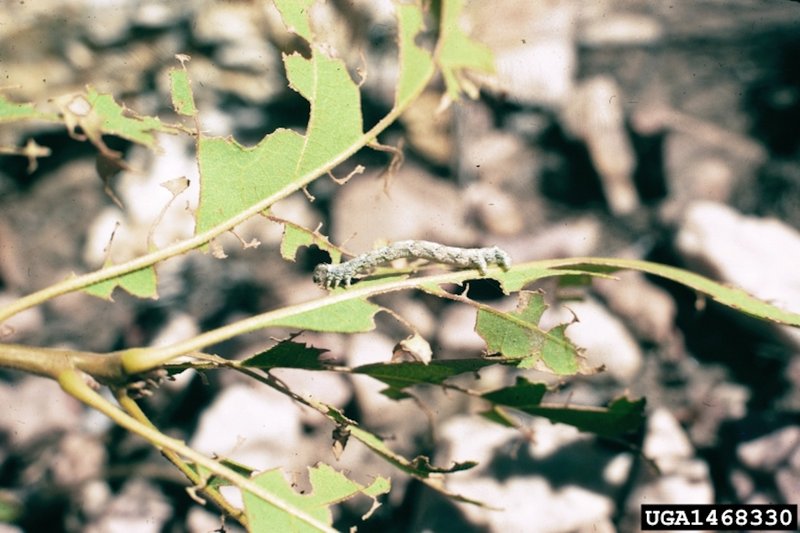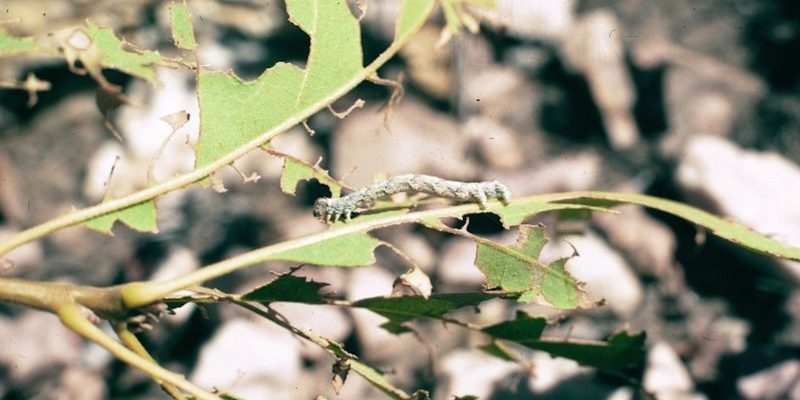
Inchworms are the larvae of certain moth species, and they’re notorious for their destructive dining habits. Imagine a guest at a buffet who only eats the salad and leaves the rest untouched—it’s a weird analogy, but it fits! The way these little guys move can be fascinating; they inch along, contracting and expanding their bodies, which is how they got their name. But their feeding habits can spell disaster for your trees. So, let’s dig in and learn how to spot inchworm damage before it’s too late.
What Does Inchworm Damage Look Like?
When it comes to identifying whether your tree has been victims of inchworm damage, the first thing you might notice is the leaves. If you see leaves that look like they’ve been nibbled on or even completely stripped, that’s a big red flag. The damage typically appears as small holes or even large sections missing from the leaves. Sometimes, entire branches may be affected, causing an uneven appearance.
Many folks have a hard time distinguishing between inchworm damage and other pests or diseases. Here’s the thing: inchworms usually target specific types of trees. They are drawn to hardwood trees like oaks, maples, and birches. So if you have one of these in your yard, keep a close watch. If the tops of the branches are bare, it’s a good sign that inchworms have made themselves at home!
Another important sign is the droppings. Yes, we’re talking about insect poop! Inchworms leave behind small, dark pellets that can litter the ground beneath your tree. If you notice these droppings along with the leaf damage, it’s a solid indication that inchworms are your unwelcome guests.
Identifying Inchworms and Their Behavior
Now that you’ve seen the damage, you might be wondering how to spot the actual inchworms. These little guys can vary in color from green to brown, which makes them blend perfectly with the leaves they munch on. They can also be quite small, often measuring around 1 to 2 inches long. Their unique movement makes them easy to spot once you know what to look for—they “inch” along by looping their bodies.
To find them, try a simple method: shake the branches of your tree gently and watch for movement. If you see tiny worms falling, you’ve likely found your culprits. They often hang out on the underside of leaves, so check there too. Just be careful—some inchworms can cause skin irritation, so wearing gloves might be a good idea!
Another interesting thing about inchworms is their life cycle. They’re usually more active in spring and early summer when the leaves are lush and green. As they grow, they’ll go through several molts, which means they can become quite a bit bigger. This is why it’s crucial to catch them early; the sooner you address the issue, the less damage your tree will suffer.
How to Manage Inchworm Damage
If you’ve confirmed that inchworms are causing problems for your tree, it’s time to take action. You might feel overwhelmed, but managing this infestation can be simple if you take it step by step. Here’s how to start:
1. **Manual Removal**: This is the easiest method for smaller infestations. Wearing gloves, you can simply pick the inchworms off the leaves of your trees. Don’t just toss them on the ground; relocate them far from your garden to prevent them from coming back.
2. **Insecticidal Soap**: This is a chemical-free option that is friendly to your plants but tough on pests. Spray the affected leaves according to the directions on the product label. Make sure to cover both the tops and the undersides of the leaves for the best results.
3. **Neem Oil**: Extracted from the seeds of the neem tree, this oil works as a natural insect repellent. Just mix it with water and spray it on your tree. It’s not only effective against inchworms but also against a variety of other garden pests.
4. **Beneficial Insects**: Encourage natural predators like birds, ladybugs, and lacewings. These creatures will feast on inchworms and help keep them in check without the need for harsh chemicals.
Let’s be clear: treating inchworm damage takes a bit of diligence. You’ll need to keep an eye on your trees and perhaps repeat treatments as needed, especially if you live in an area where inchworms are common.
Preventing Future Inchworm Infestations
Once you’ve dealt with an inchworm issue, the next step is preventing them from coming back. Think of it like putting up a fence after letting in the cows! Here are some practical steps:
– **Regular Inspections**: Make it a habit to check your trees regularly for any signs of insect activity. Early detection is key, and a quick weekly check can save you a lot of hassle down the road.
– **Healthy Tree Care**: Keeping your trees healthy is crucial. Watering properly, fertilizing when needed, and pruning dead or diseased branches will help create a vigorous tree that’s less susceptible to pests.
– **Removing Leaf Litter**: After the fall season, make sure to clean up fallen leaves around your trees. Inchworms can pupate in leaf litter, so removing it can reduce their chances of returning.
– **Plant Diversity**: If you have multiple types of trees and plants in your garden, it can confuse pests. Inchworms are less likely to target a diverse landscape, so variety will help protect your trees.
Remember, prevention is often easier than cure, so taking these steps can save you a lot of time and effort.
When to Call the Professionals
Sometimes, despite your best efforts, an inchworm infestation can become overwhelming. If you notice that the damage is extensive or if your tree is showing signs of disease, it may be time to call in the pros. An arborist can assess the situation thoroughly and recommend the right treatment.
You might think, “Can’t I just handle this myself?” While DIY solutions are effective for minor problems, you want to avoid causing further harm to your tree with improper treatments. When in doubt, professional help can provide peace of mind and ensure your tree gets the best care possible.
Keep in mind that early intervention is essential if you want to save your trees. With their expertise, they can often save trees that homeowners might think are beyond saving.
Recognizing the signs of inchworm damage is the first step in protecting your trees. With a bit of observation and care, you can manage and prevent these pesky critters from causing havoc in your yard. Remember to keep an eye on your trees, regularly check for signs of damage, and take action swiftly if you spot any inchworms.
By combining good practices and treatments, you’ll not only save your trees but also create a healthier ecosystem in your garden. So, here’s to happy trees and gardens free of pests!

